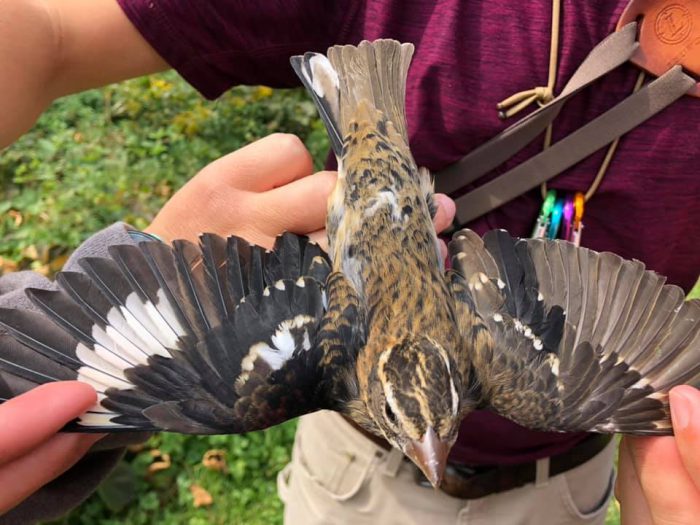In the world of birds, feathers are everything.
They keep the animal warm, act as waterproofing, and, of course, their lightweight aerodynamic qualities allow for the most bird-like ability of all. Flying!
But there's yet another very bird-like trait that feathers are famous for. Their appearance.
From the colours—iridescent blues and greens, vibrant red and yellows, mottled browns, stark blacks and whites—to the shapes—short, functional tufts to long, decorative plumes—bird feathers look amazing. This is a key to the species. In particular, most male birds have eye-catching markings that are designed to enhance their attractiveness to a mate. They are what give the peacock its strut.
But every once in a while, a magical accident happens in nature. The gynandromorph (say jeye-NAHN-droh-morf). This is an animal with both male and female markings or characteristics down each side of the body. Its appearance is half-male, half-female.
Recently, biologists found a very rare gynandromorph rose-breasted grosbeak. And what a beautiful bird it is!
Skin deep? Or deeper?

The split markings run the entire length of the bird, including its tail. (Powdermill Nature Reserve Facebook)
The bird was found by researchers at Powdermill Nature Reserve in Rector, Pennsylvania. The team was out bird banding, which involves humanely catching and tagging birds so that their behaviour can be studied. In a statement, the program manager Annie Lindsay said, "The entire banding team was very excited to see such a rarity up close, and are riding the high of this once-in-a-lifetime experience. One of them described it as ‘seeing a unicorn’."
And though this half-male, half-female bird is not as rare as a unicorn (which does not exist, sorry fantasy fans!), it is indeed a once-in-a-lifetime experience. It also brings up a question. How deep does the division run?
Another rare event in nature is hermaphroditism, which is when an animal has both male and female reproductive organs. For now researchers don't know. Could this bird lay eggs and produce young as females do? Could it fertilize eggs as males do? And how do other birds see it? As a male or a female?
Appreciate the rare beauty
Answering these sorts of questions would take a lot of research—research that the biologists at Powdermill may not get to do. But for now, we can all appreciate the rare beauty of this animal.
We can also think about just how one-of-a-kind it may or may not be. Because though it is unusual, it is not unheard of. In fact, in 2005, researchers at Powdermill found another rose-breasted grosbeak with gynandromorphism. Perhaps over time we'll encounter even more of them and learn about how they fit into bird society.
For now, we can all agree that they make it more colourful!
 The red side of this bird has male markings, while the other side is female. (Annie Lindsay)
The red side of this bird has male markings, while the other side is female. (Annie Lindsay)









